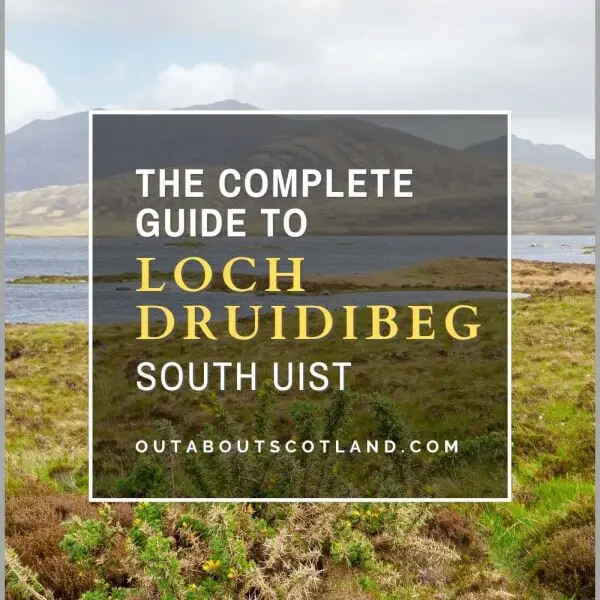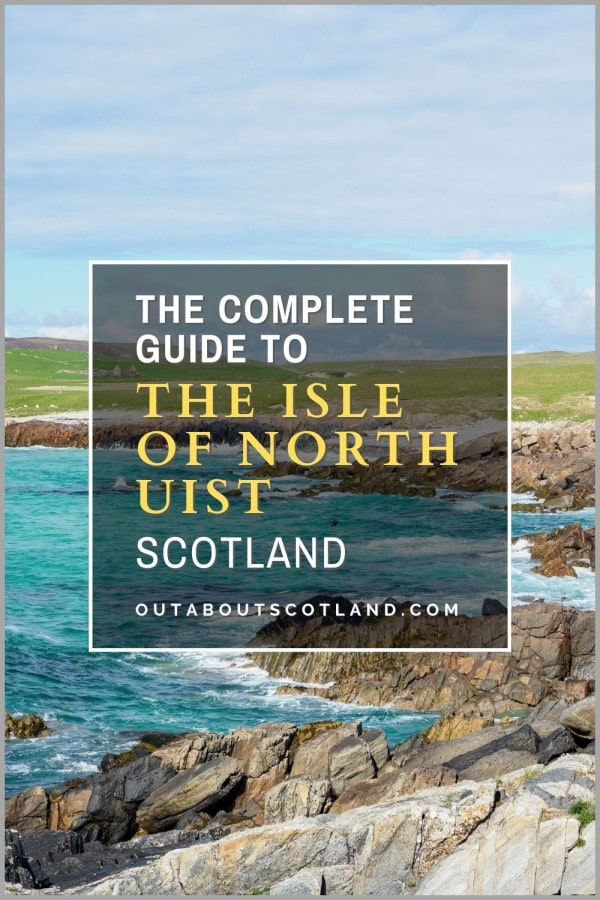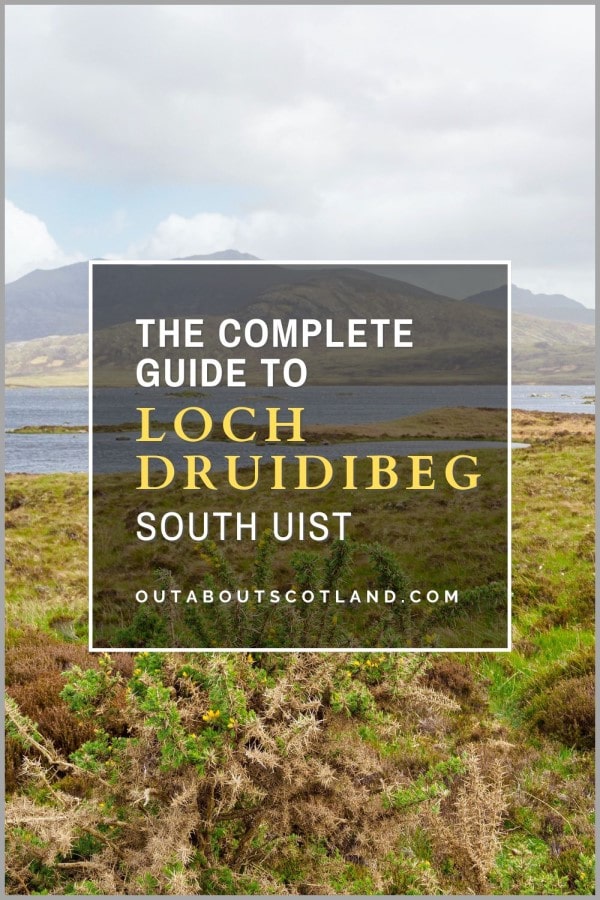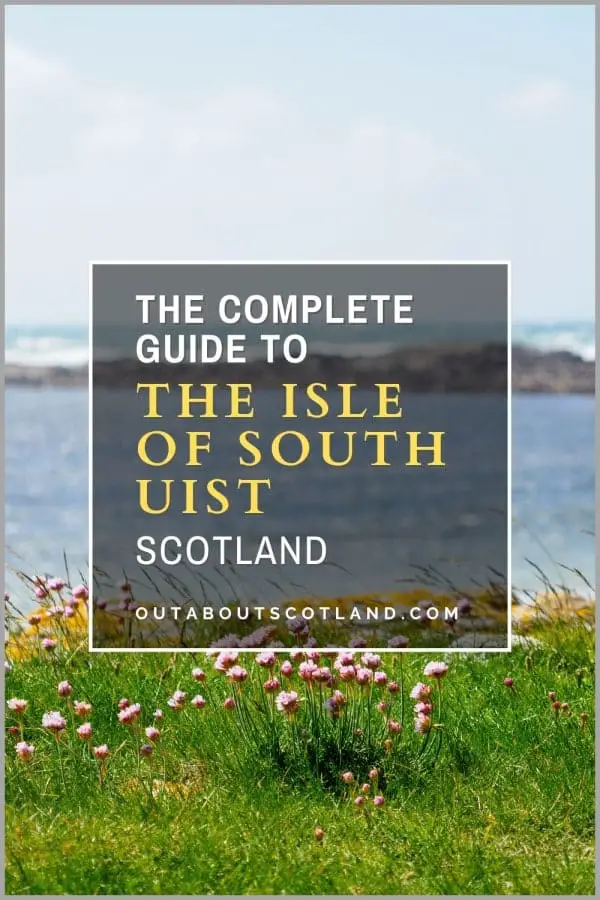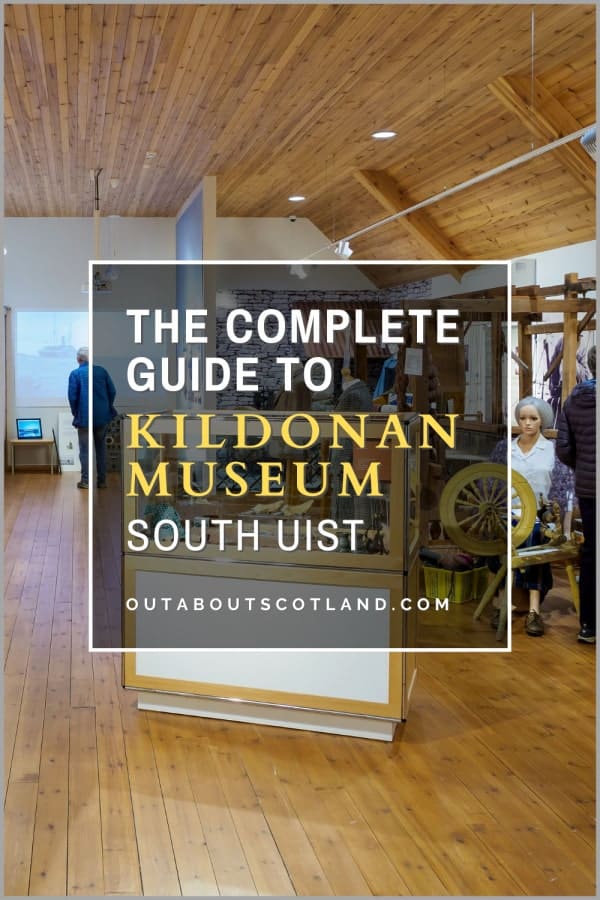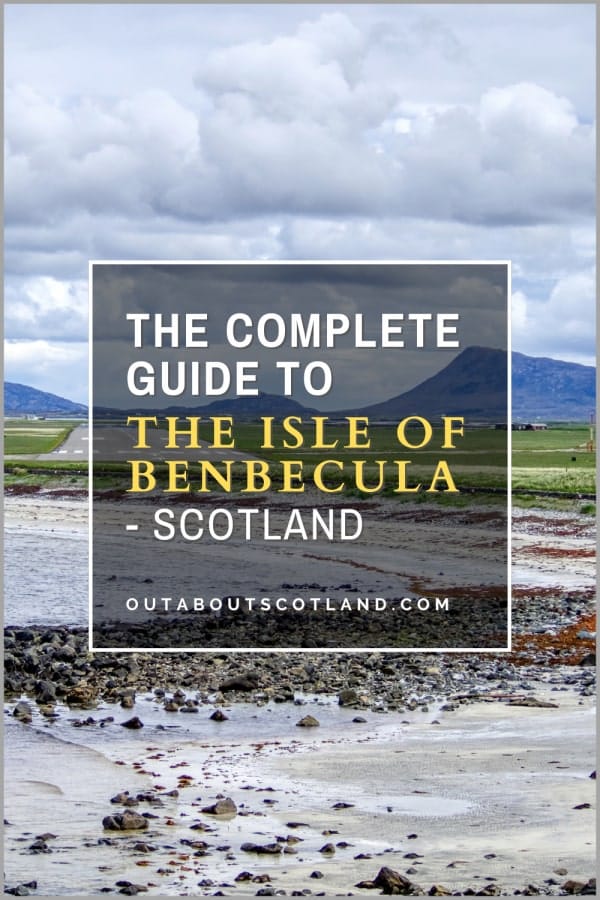Loch Druidibeg is part of a nature reserve situated in a beautiful moorland setting on the northern end of the Isle of South Uist in the Outer Hebrides. The RSPB is in charge of managing the loch and its surroundings, taking care of the delicate habitats that are home to hen harriers, white-tailed eagles, and numerous insect species.
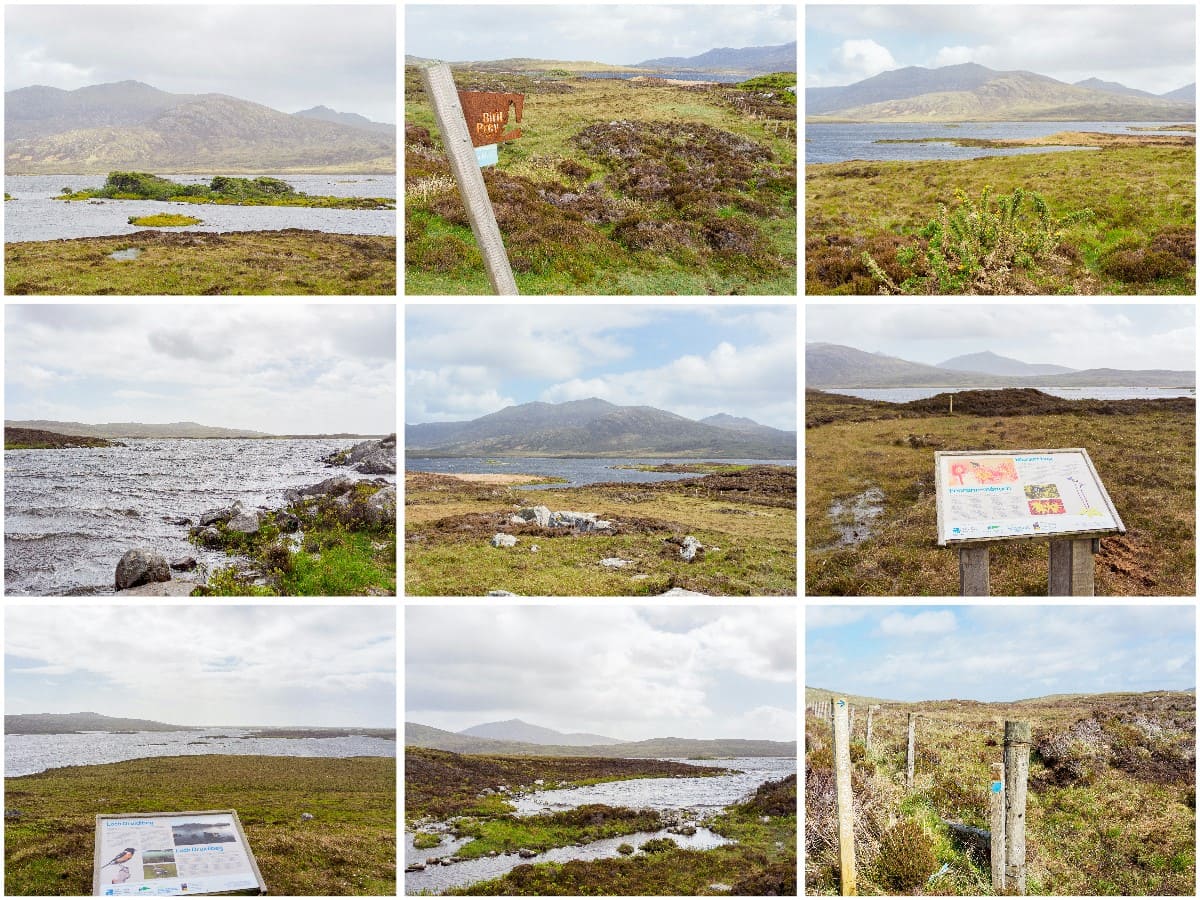
| Address: | Grogarry, South Uist, HS8 5RR |
| Opening Hours: | Loch Druidibeg is accessible 24/7 365 days a year |
| Admission Price: | Free but donations welcome |
| Parking: | The entrance to the reserve has a single car park with space for around 8 vehicles. The surface is gravel and compacted dirt. The single-track road leading to and from Loch Druidibeg is not suitable for parking on the verge except for a small off-road area located 375 feet north of the car park. |
| Contact: | Tel: RSPB 07747 455 978 |
| Facilities: | Waymarked nature trails, information boards. There are no other facilities at Loch Druidibeg. The nearest shops are Lovats Supermarket in Carnan - postcode HS8 5QX and a Co-op at Creagorry - postcode HS7 5PG. |
Overview
The Outer Hebridean island of South Uist is perhaps best known for the vast stretch of powder sand beaches on its west coast, as well as the desolate wilderness of the heather-covered uplands on the east coast. While many people pass through Uist without spending much time anywhere other than the coastlines, the centre of the island is just as scenic.
Although trails heading into the remote central region are few and far between its possible to cross the island’s interior towards its northern end near Loch Druidibeg, which also happens to be the location of one of Scotland’s most attractive nature reserves.
This RSPB reserve is situated off the A865 near Kinloch in an area that’s comprised of flat featureless grassland interspersed with hundreds of lochs and lochans. However, as soon as you take the turn onto the B890, the scenery becomes far more interesting, with dramatic mountain ridges framing the scene to the east and a vast, watery expanse immediately to the south.
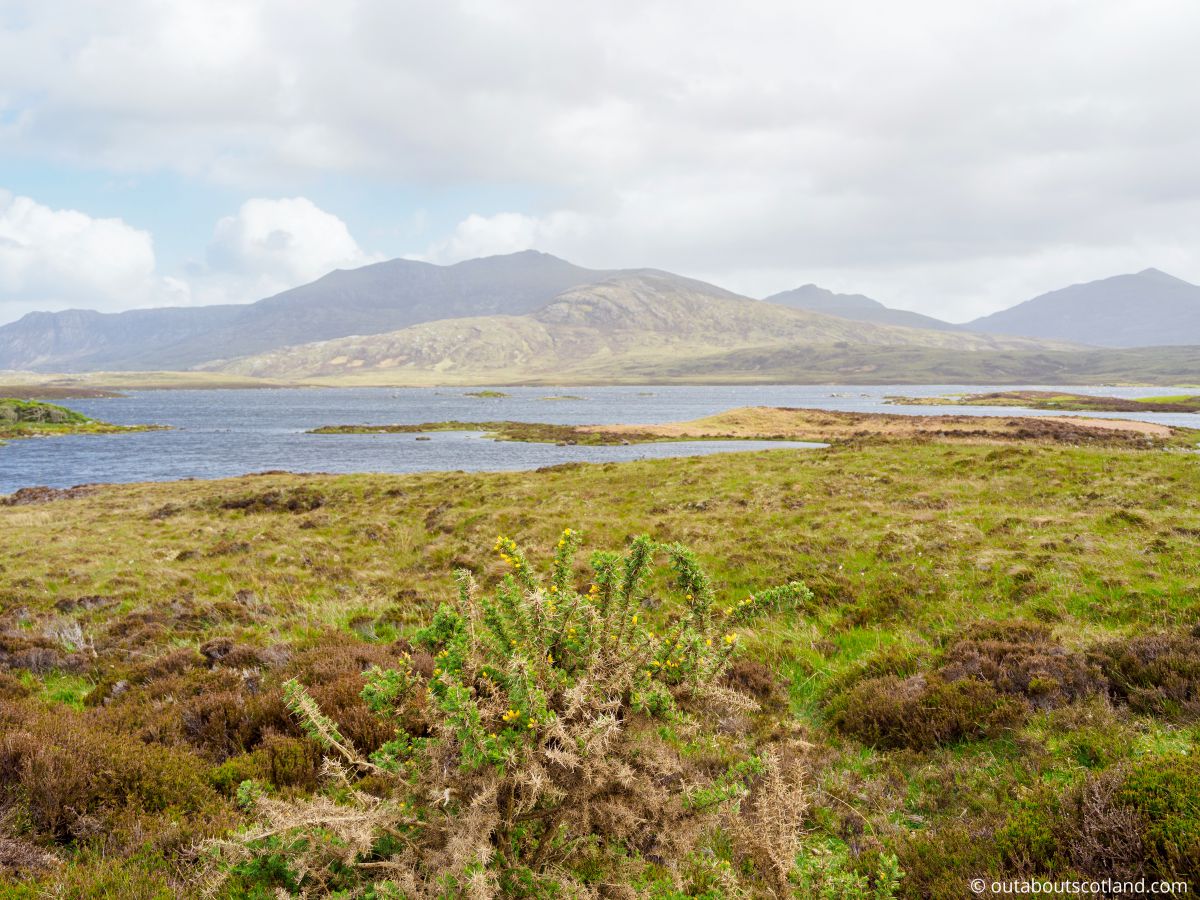
This body of freshwater is Loch Druidibeg – one of the largest lochs in the Uist’s and home to more wildlife than virtually anywhere else in the Southern Outer Hebrides. The entire reserve covers 11,000 hectares in a landscape that comprises waterlogged bog, grassland, peat, woodlands, hill ranges, and, of course, Loch Druidibeg itself, which covers an area of nearly 2,600 acres.
Living amongst this wildlife haven is a diverse variety of bird species, from black-throated divers bobbing about on the loch to huge sea eagles soaring overhead on the hunt for their next meal. The reserve is also a stronghold for over 200 different types of orchids and wildflowers, many of which are categorised as rare and endangered.
One unusual feature of Loch Druidibeg is that it’s the location of a woodland on its northern edge that was planted for a lodge that was never built and is now home to woodland birds which are rarely found anywhere else in the Outer Hebrides.
In fact, RSPB Loch Druidibeg is so important to wildlife that it has been declared both a Site of Special Scientific Interest and a Special Area of Conservation – one of the few places in Scotland that has been given both designations.
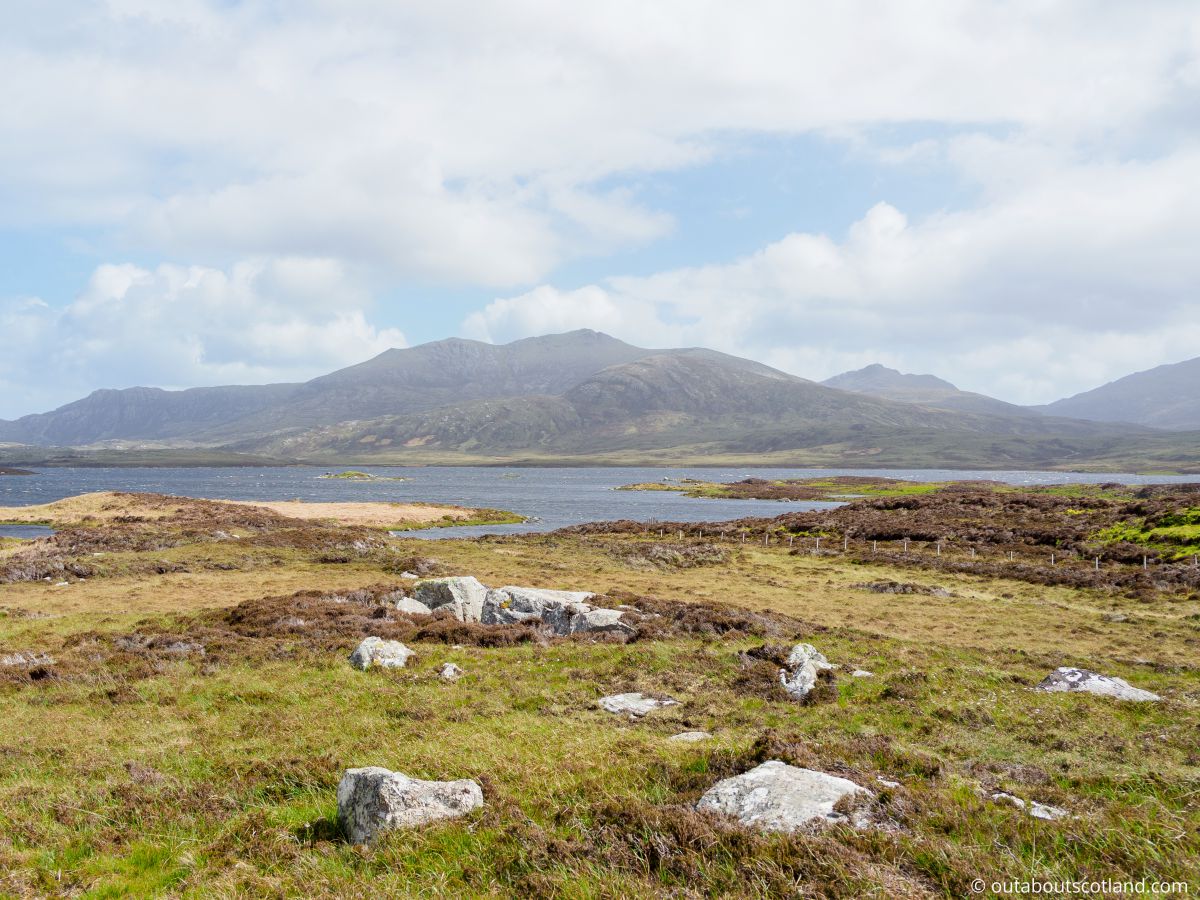
The Highlights
1: The Loch Druidibeg National Nature Reserve is a must-do for all visitors to South Uist. This remote island in the Outer Hebrides is best known for its west coast beaches, but if you take the time to head into the centre you’ll discover an unspoilt wilderness that’s a haven for wildlife.
2: Keep your eyes open for majestic white-tailed eagles during your visit to Loch Duidibeg. These birds are the largest in Britain and have a wingspan of well over 2 metres – hence the nickname ‘the flying barn door’.
3: There are three superb nature trails at Loch Druidibeg – The Woodland Trail, The Lowland Moor Trail and The Upland Moor Trail – which are all well signposted, though they cross areas that are very boggy in places.
Those visitors who prefer to keep to tarmacked roads will be pleased to know that an equally enjoyable route follows the road that runs through the reserve on its way to Loch Sgioport on the eastern side of the island. This is the best route to take for anyone who isn’t comfortable trudging through wet marshland and peat bogs.
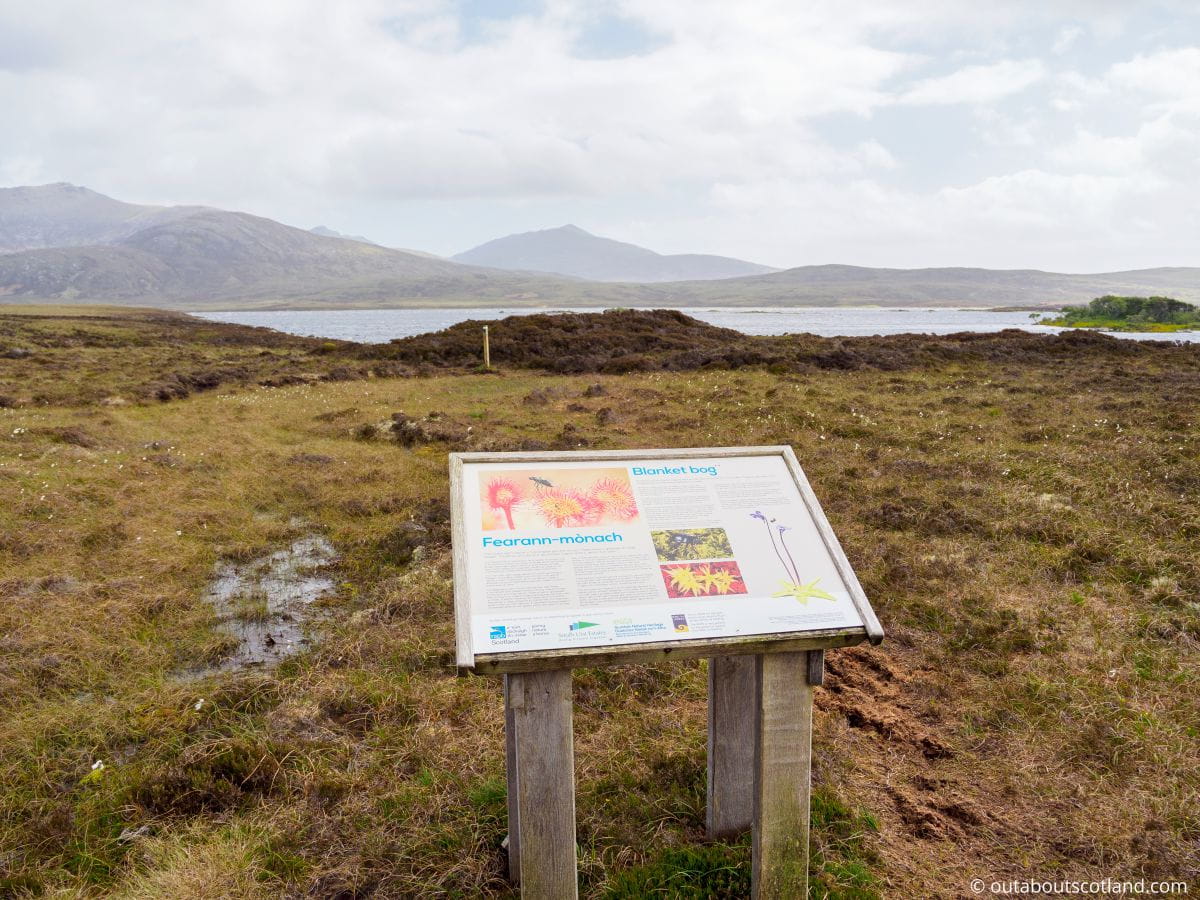
Visiting Tips
1: The reserve is worth visiting at any time of year but spring is a real treat for wildlife lovers when emerging plants and flowers attract a buzzing cacophony of insects. These insects signal the arrival of many different bird species, such as golden plovers, cuckoos, and skylarks, which in turn attract hen harriers. If you intend to visit Loch Druidibeg, give springtime serious consideration when planning your trip.
2: The car park is quite small but it’s just about big enough for a campervan or two in addition to around 8 cars. There are anchors to secure bikes in the car park as well as information leaflets courtesy of the RSPB. There’s also a donation box if you’d like to leave a couple of quid to help with the upkeep of the reserve.
3: Due to the amount of moorland and blanket bog on this 27,000-acre nature reserve, it’s a good idea to wear waterproof walking boots no matter the time of year. The mosses that grow in the moorland of Loch Druidibeg soak up water like sponges, so even on the sunniest days, the ground is completely sodden. Combat soggy socks with a pair of wellies or, at the very least, waterproof hiking boots.
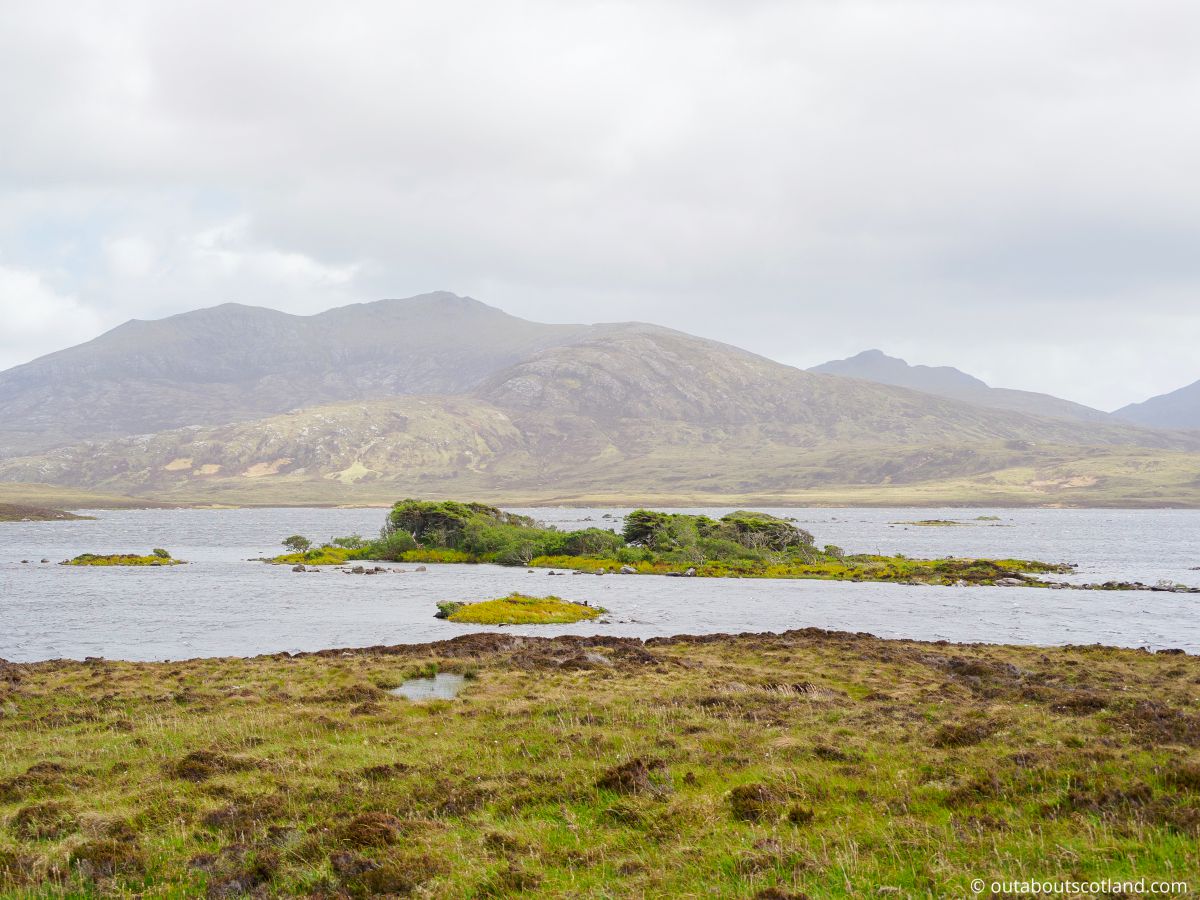
Tourist Information
Getting to Loch Druidibeg is easy as it’s well signposted at the junction of the A865/B890 around 5 miles from the Benbecula causeway on the northern end of South Uist. The road meanders its way through attractive moorland for around 1.5 miles until it passes a car park, which marks the start of the RSPB reserve.
Although it’s possible to continue down this road for another 2 miles to Loch Sgioport, there are very few places on the side of the road large enough to park up, and of course, leaving vehicles in the passing spaces along the single-track road is strictly prohibited.
The car park is fairly small, so it’s not ideal for campervans, but there’s enough space for around 8–10 smaller vehicles. Please keep in mind that the charity provides this parking space free of charge, so when you visit, think about leaving a donation to help cover the costs of maintaining it.
The RSPB has thoughtfully left leaflets in the car park that show where the main walking trails are, and there are anchor points to chain bikes to if you’re visiting as part of a Hebridean Way cycling tour. I walked two trails during my time on the island and loved every minute of my adventures, starting with the path that leads directly out of the car park, heading west.
This trail is rather boggy, but the scenery is lovely, cutting right through the loch and finishing back on the A865 1.5 miles later.
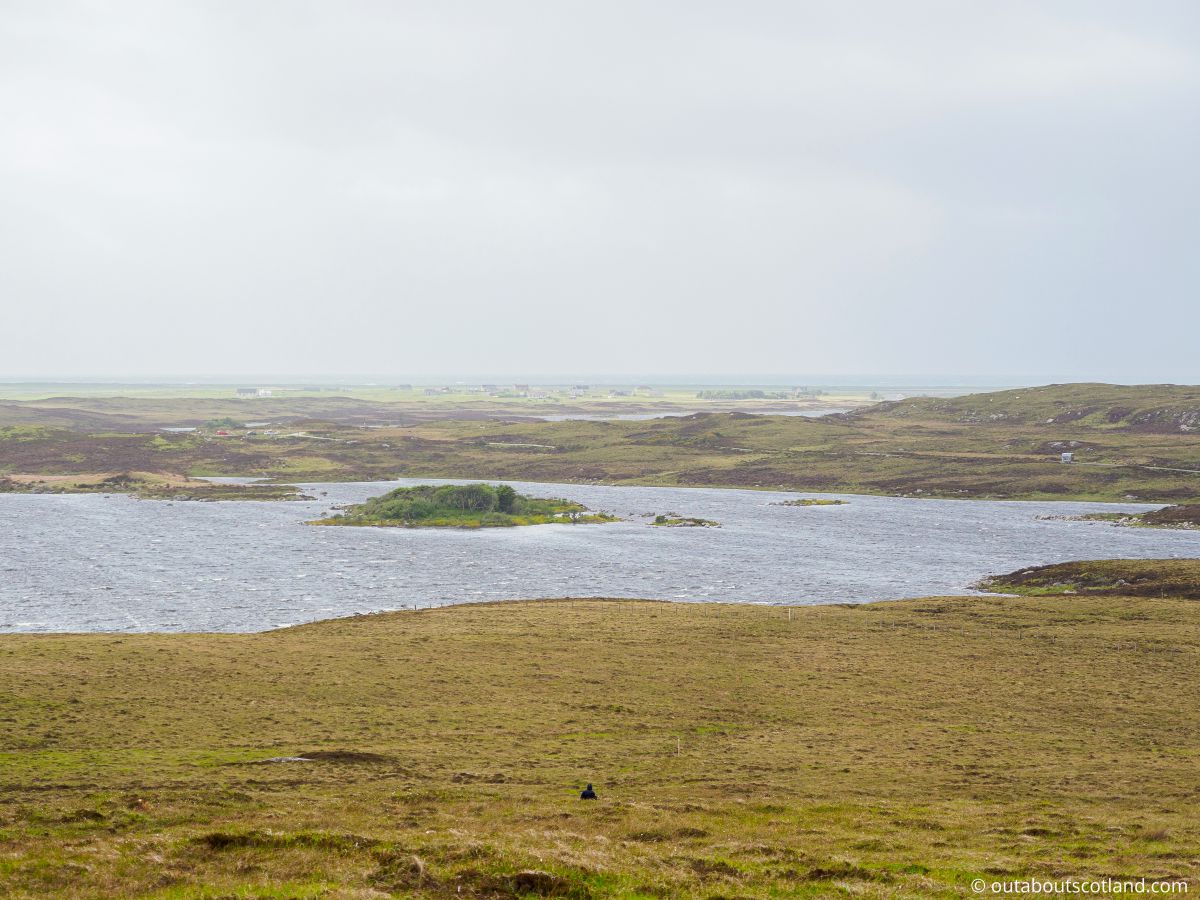
The other trail heads in the opposite direction out of the car park and along the road heading east for 1 mile, then cuts across the moorland on the eastern side of Loch Druidibeg. There’s a bit of an incline as you head towards the hills, but the views are outstanding, and it’s by far the best place to catch sight of birds, especially white-tailed eagles.
If you keep your eyes fixed towards the loch you might be lucky enough to catch sight of an otter or two but as the best vantage point is around 1/3 mile from the water a pair of binoculars is a necessity (link to my recommended optics from Amazon).
There are coloured waymarkers in this part of the reserve, so following the trail is easy, but be aware that the ground is very boggy (very boggy after a rainfall), so I wouldn’t even attempt it unless wearing a pair of waterproof hiking boots (link to my recommended boots from Amazon).
There are information boards located at the main viewing areas which describe the landscape and the plants that grow there, as well as the birds and animals you’re likely to see which include hen harriers, ravens, cuckoos, sea eagles, divers and (from autumn) whooper swans.
One final point to make is that while dogs are allowed in the reserve, they must be kept on a lead at all times as there are many ground-nesting birds that are easily disturbed and many of them are already categorised as either vulnerable or rare in Britain.
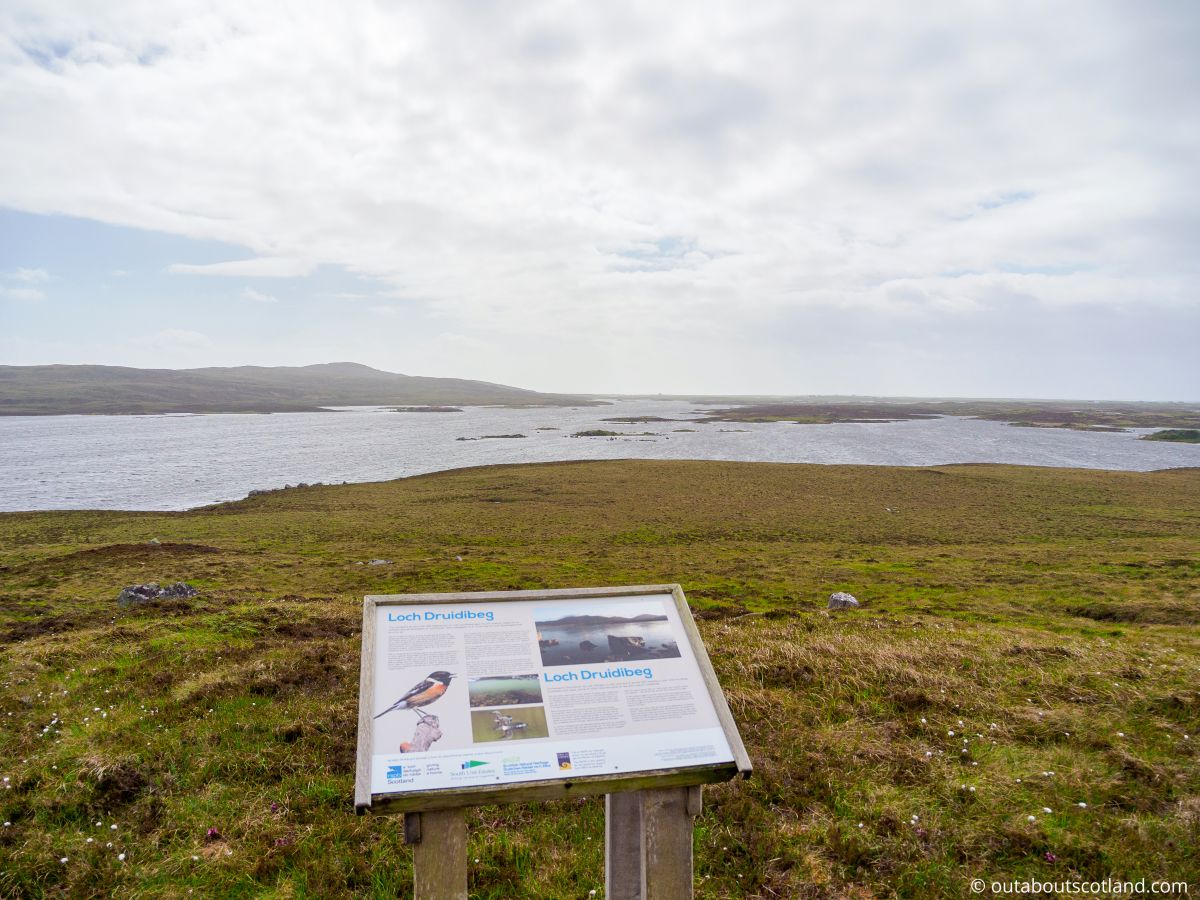
Things to Do
Bird Watching: Loch Druidibeg is a haven for bird enthusiasts. The reserve is home to a wide variety of species including white-tailed and golden eagles, harriers, and merlins. Don’t forget your binoculars (link to binocular reviews) to fully enjoy this wonderful bird-watching experience.
Hiking: Embark on an invigorating hike around the beautiful landscapes of Loch Druidibeg. The trails provide fantastic views of the loch and the Hecla mountains. It’s a great way to connect with nature and enjoy the tranquillity of this peaceful reserve.
Photography: With its breathtaking landscapes, Loch Druidibeg offers ample opportunities for photography. Capture the scenic beauty of the loch, the diverse flora and fauna, and the stunning sunsets to create lasting memories of your visit.
Fishing: Try your hand at fishing in the tranquil waters of Loch Druidibeg. It’s a great place for anglers to relax and enjoy the peaceful surroundings and possibly catch one of the brown sea trout that occasionally make their way into the loch from the Atlantic.
Wildlife Spotting: The reserve is teeming with wildlife. Alongside the bird species, you might also spot red deer, otters, and a wide variety of insects (and I’m not just talking about midges!).
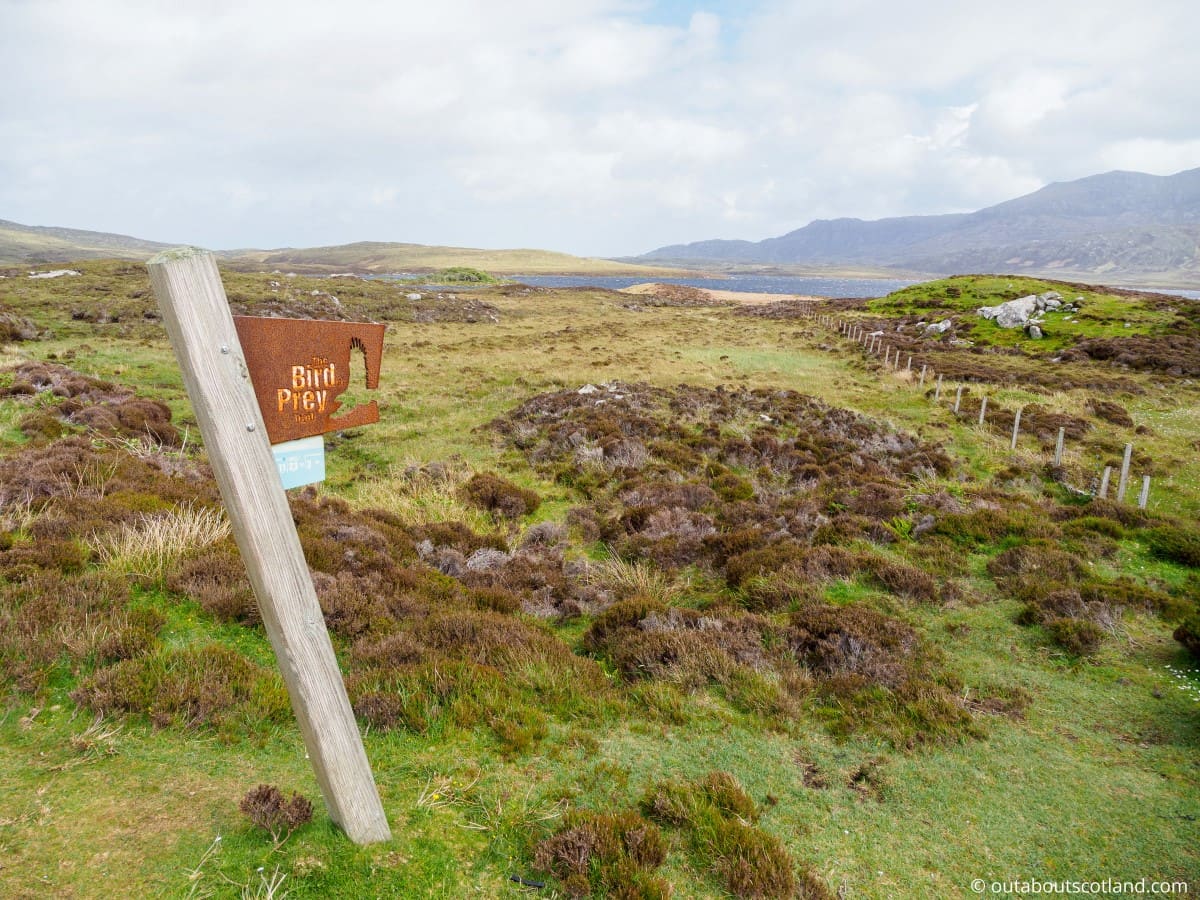
Things to Do Nearby
Kildonan Museum. Address: Kildonan, Isle of South Uist, HS8 5RZ. Distance: 9.6
This museum is dedicated to the culture and heritage of South Uist. The museum features a number of displays and artefacts that depict rural life on the island from crofting to fishing, along with stone carvings and a photo archive. There’s a cafe next to the museum that serves home-cooked local produce and a gift shop that sells tourist guidebooks and maps of South Uist.
Frobost Headland & Beach. Address: Isle of South Uist, HS8 5SA. Distance: 5 miles.
The Frobost headland lies immediately north of Kildonan Beach. A good walk can be had by parking at St. Mary’s Catholic Church (postcode HS8 5SA) and walking west to the end of the track. Along the way, you’ll see the remnants of a Viking settlement before reaching the headland, which is home to a wide variety of seabirds. There’s a rough grass parking area at the headland that is suitable for mid-size motorhomes.
Flora MacDonald’s House. Address: A865, Mingarry, South Uist. Distance: 10 miles.
Flora MacDonald is famous for helping Bonnie Prince Charlie escape to France after his defeat at the Battle of Culloden. The foundation walls of the house where she grew up are still intact, as is a memorial cairn erected by Clan MacDonald.
Our Lady of the Isles. Address: West Gerinish, Isle of South Uist, Outer Hebrides, HS8 5RW. Distance: 2.2 miles.
Our Lady of the Isles is a large statue situated near Gernish in the southern half of South Uist. The 40-ton statue was commissioned and paid for by the islanders to show their devotion to the Virgin Mary and the Catholic way of life. A path leads to the statue from the A865, which allows visitors to appreciate the stunning views across the Atlantic from a raised viewing platform.
Garrynamonie Machair & Beach. Address: Garrynamonie, Isle Of South Uist, HS8 5TX. Distance: 12 miles.
South Uist is well known for the gorgeous white sand beach that runs along its western coastline virtually uninterrupted for 20 miles. All sections of the western coastline are worth visiting, but the area around Garrynamonie (Gearraidh na Monadh in Gaelic) is particularly pretty due to the flowering machair that runs parallel to the beach.
Frequently Asked Questions
What is the main town on South Uist?
There is no town in South Uist. The main village is Lochboisdale which is located on the shore of Loch Baghasdail on the southeast edge of the island.
Lochboisdale was a major herring fishing port in the 19th century but today it’s mostly used as a ferry port with sailings to Oban on the mainland.
How many RSPB reserves are there in Scotland?
The RSPB currently manages 77 nature reserves in Scotland. These reserves encompass more than 177,916 acres, or nearly half of the total amount of land that the RSPB manages in the entire UK. Each year, Scotland’s RSPB nature reserves welcome over 300,000 visitors.
Do you have to pay to go to RSPB reserves?
Many RSPB nature reserves are free to visit, although some have paid for car parking and accept voluntary donations. All RSPB sites allow free entry for members. Membership costs around £5 per month. See the RSPB website for details.
Can you drive between North and South Uist?
It is possible to drive from the southernmost point of South Uist to the northernmost point of North Uist. From the Eriskay causeway, the B888 heads into South Uist, where it joins the A865. This road continues north over the causeway to Benbecula, across the North Ford causeway to Grimsay and North Uist, and onwards to the B893, which finishes at the Berneray causeway.

